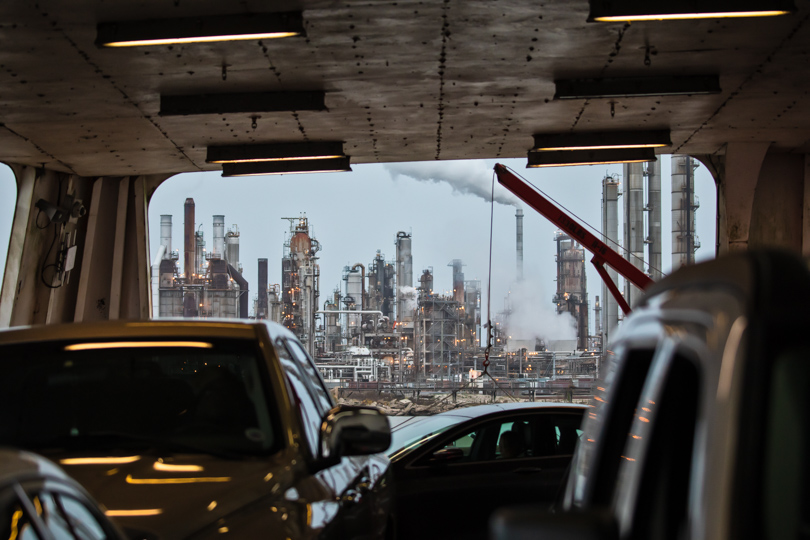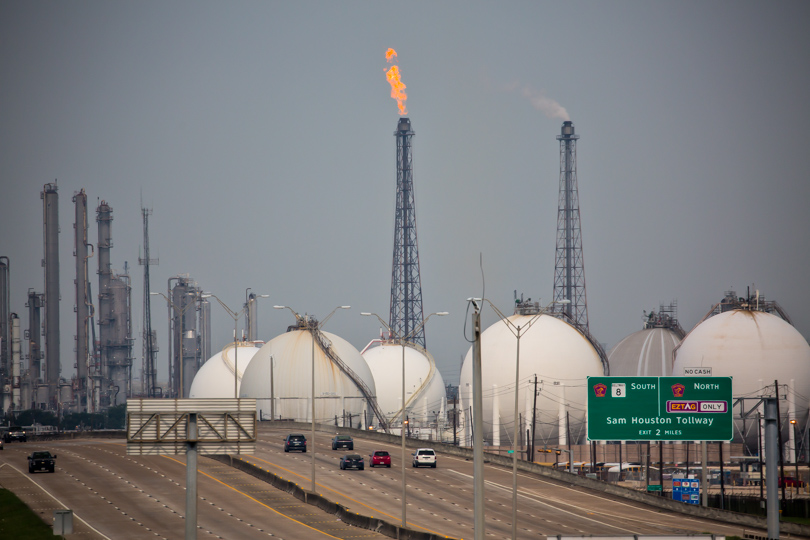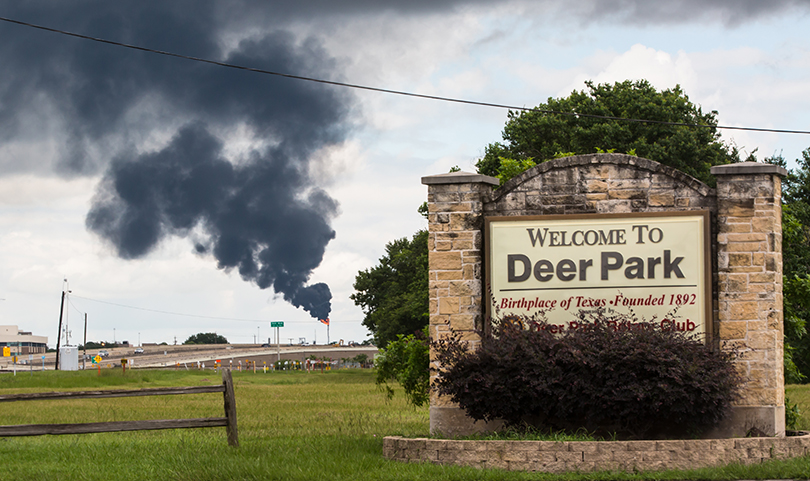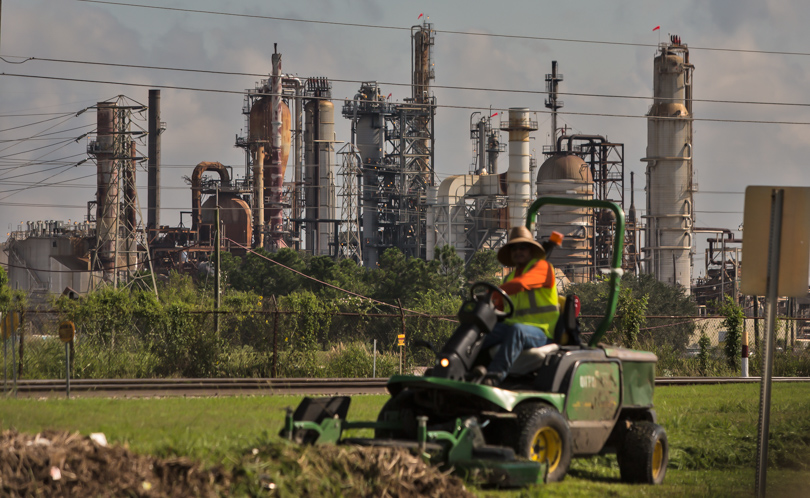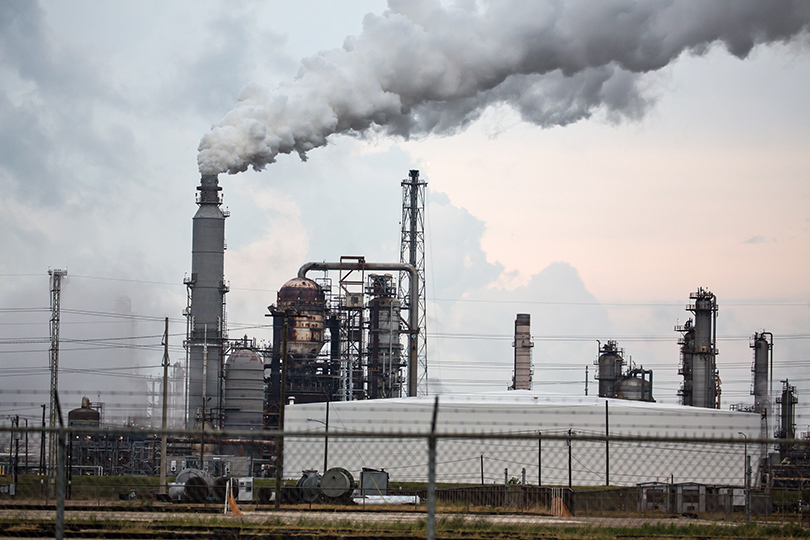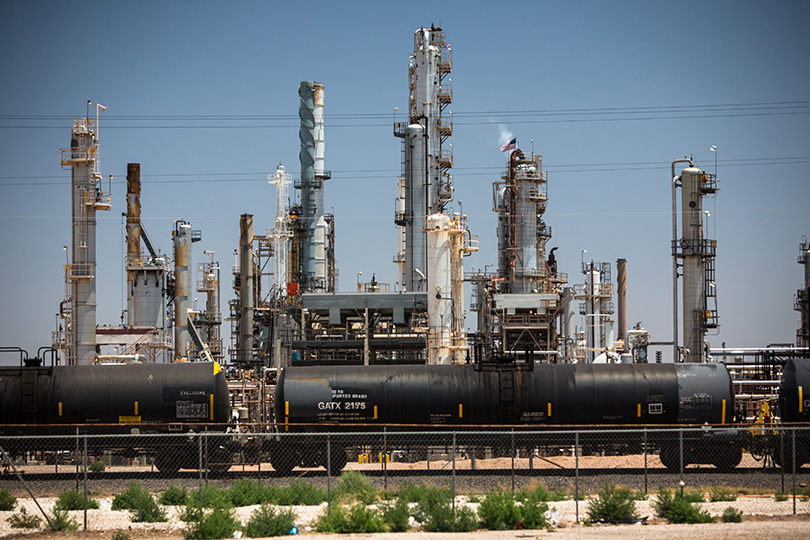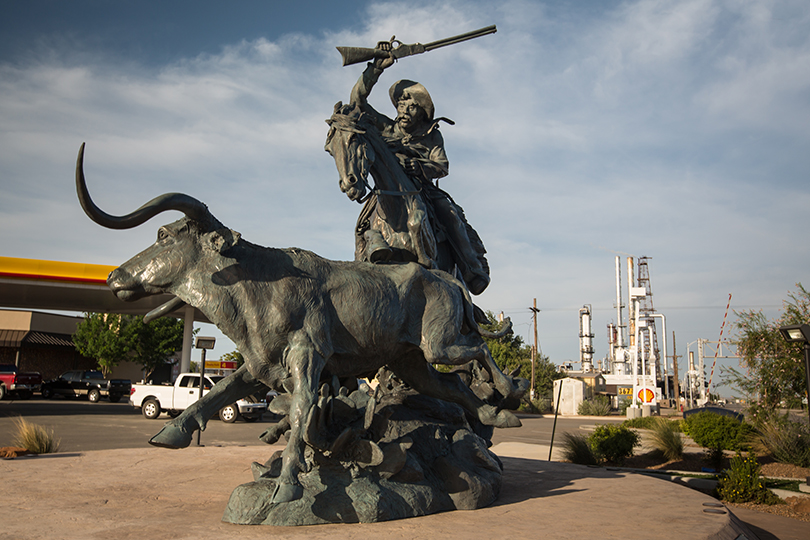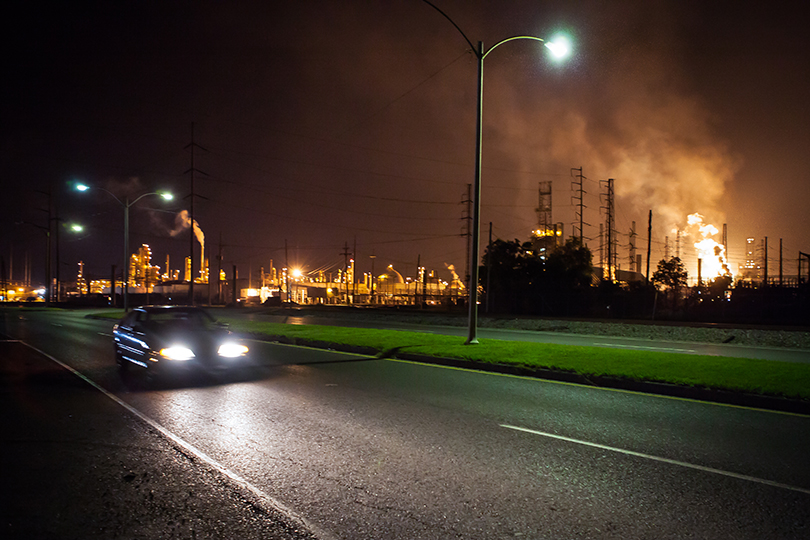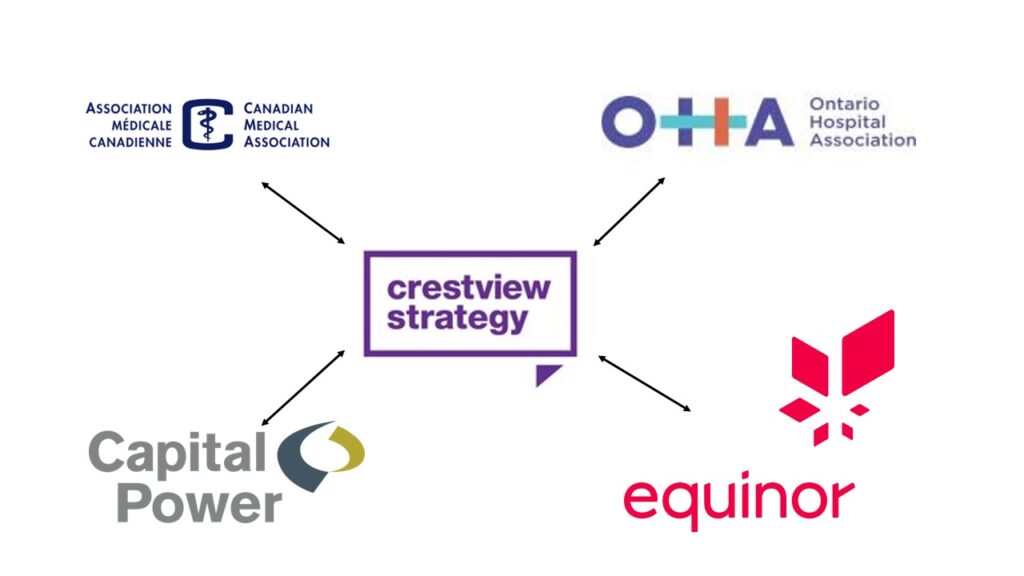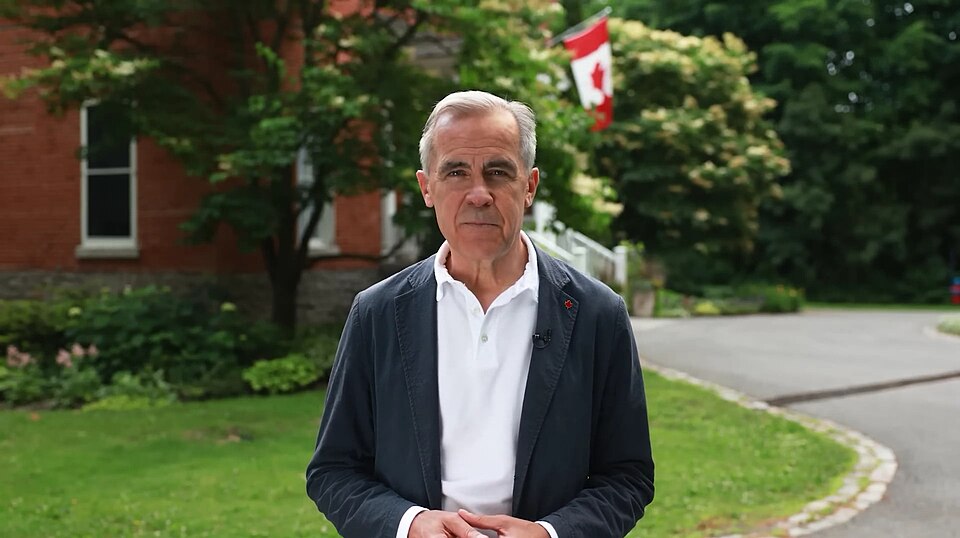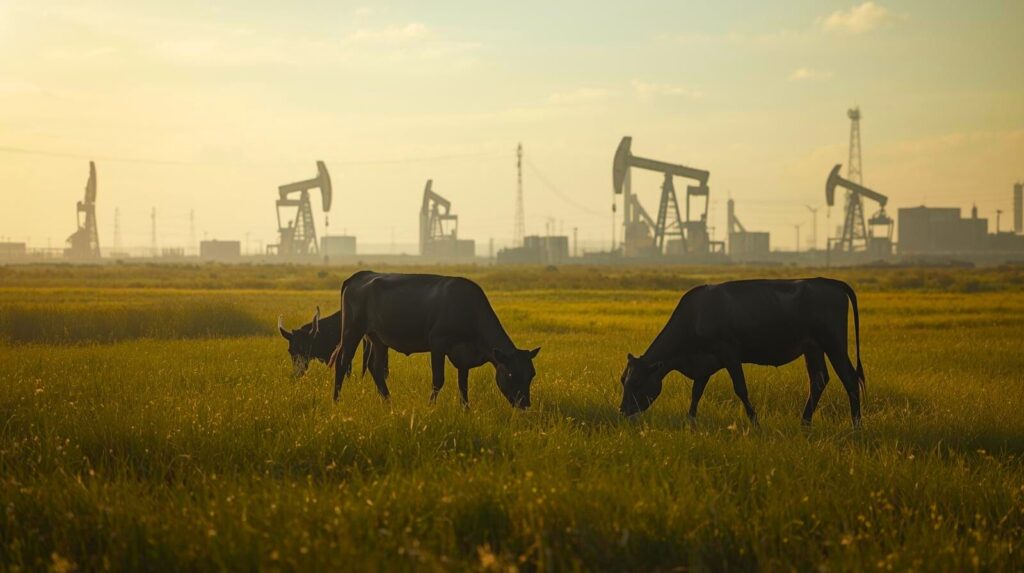Available for the first time, Environmental Protection Agency (EPA) air monitoring data from over 100 U.S. oil refineries shows that 10 facilities have exceeded federal limits for cancer-causing benzene along their borders. The data, which raise health concerns about the communities adjoining these refineries, were released in a February 6 report by the Environmental Integrity Project, a nonprofit group of former EPA enforcement attorneys, public interest lawyers, and community organizers.
Lt. General Russel Honoré, founder of Louisiana’s Green Army, a grassroots anti-pollution coalition, hailed the report as a great tool for communities that live near refineries to press for the monitoring of additional toxic chemicals.
While pleased that the government is now monitoring for benzene, he and other environmental advocates say these results show the need for more robust monitoring at industrial plants in order to protect nearby populations. Studies have shown these communities are often people of color and low-income and suffer disproportionally from air pollution relative to the overall population.
While the report specifies the refineries listed have not broken any federal laws, Honoré thinks that point is debatable. In his view, the elevated emissions go against the intent of the Clean Air Act. “From the day the Clean Air Act was signed, Congress and multiple administrations have tried to weaken it,” he said, “but the intent of it is clear — people have a human right to clean air.”
EPA’s benzene monitoring program is the result of 2012 lawsuit against the agency by the Environmental Integrity Project and environmental groups working across the country that alleged the EPA was over a decade late in reviewing and updating toxic air standards for refineries, as required by the Clean Air Act.
According to NOLA.com, in 2015 when the agency’s plan was announced, former EPA Administrator Gina McCarthy said the monitoring requirements and requirements to identify and reduce emissions were directly related to their potential health effects.
Since January 2018, the EPA has required oil refineries to determine if average annual benzene emissions at the monitoring sites along its fence lines exceed a certain limit and if so, to find and address the cause. Ten plants were found exceeding the EPA’s limit, including (from highest to lowest): Philadelphia Energy Solutions, HollyFrontier Navajo Artesia, Total Refinery Port Arthur, Pasadena Refining, Flint Hills Resources Corpus Christi East, Chevron Pascagoula, Valero Corpus Christi East, Chalmette Refining, Shell Deer Park, and Marathon Galveston Bay Texas City.
Benzene is one of many toxic emissions released from refineries as they convert oil into products such as gasoline. Benzene exposure can cause vomiting, headaches, anemia, increased risk of cancer, and, in high enough doses, death, according to the U.S. Centers for Disease Control.
The American Fuel & Petrochemical Manufacturers trade group pushed back against health concerns raised by the report. “The EPA intended the fenceline monitoring data to be used as a tool to assist a facility in measuring potential leaks and to assure that emission sources at facilities are effectively controlled,” a statement on its website says. “The data is not a measure of community exposure or risk.”
According to Reuters, the EPA said, “It is important to note that benzene concentration levels monitored at the perimeter of a refinery do not reflect benzene levels in the community.” The agency added that its limits are stringent “in order to provide ample opportunity for early action.”
But environmental advocates across the country say this is downplaying the potential health impacts from benzene exposure, a move they call irresponsible.
Big Emitters
Six of the plants on the list are in Texas, including Total Port Arthur Refinery plant in Port Arthur.
Flare at the Shell Deer Park refinery in Deer Park, Texas.
Smoke from the Shell Deer Park refinery in Deer Park, Texas, a couple days after Hurricane Harvey struck the region.
“Benzene is a well-known carcinogen and for years a disproportionate number of Port Arthur’s residents who live near the fence line of petroleum refineries have died from various types of cancers and other diseases related to benzene exposure,” environmental activist Hilton Kelley told DeSmog by email. “There is no safe limit of benzene which is allowed to be released into the air.
Pasadena Refining in Pasadena, Texas.
Marathon Galveston Bay Refinery in Texas City, Texas.
The second-highest emitting refinery on the list is the HollyFrontier Navajo refinery in Artesia, New Mexico, on the edge of the nation’s most prolific oilfields, in the Permian Basin.
“Some of the benzene levels detected were extremely high and close to vulnerable populations,” Rebecca Sobel, with the nonprofit WildEarth Guardians, said in a press statement. During a press call about the report, Sobel expressed concern that conditions for the community near the Artesia plant could get worse as fracking infrastructure continues to spread. An “unchecked fracking industry is destroying our environment,” she said.
Train in front of the HollyFrontier Navajo Artesia refinery in Artesia, New Mexico.
Sculpture near the HollyFrontier Navajo Artesia refinery in Artesia, New Mexico.
Monique Verdin, an Indigenous activist who lives in St. Bernard Parish near the refinery in Chalmette, Louisiana, shared the report on social media with a message that her community deserves better. Chalmette Refining, owned by PBF Energy, is located about 8 miles south of New Orleans and ranked eighth in the level of cancer-causing benzene emissions.
“Saint Bernard has had some of the worst air quality in the nation for too long,” Verdin told DeSmog. “It’s not surprising that Chalmette Refining is pushing for regulation rollbacks on one hand, while poisoning the air children and citizens in our community breathe and then pat themselves on the back for being ‘invested’ in Saint Bernard, doling out a few of their profits here and again to support schools and other social programs.”
Car passing a flare at the Chalmette Refining plant in Louisiana.
NOLA.com reported that Chalmette Refining has developed a plan to curtail its benzene emissions that will be completed by March 31. Like most of the refineries on the report’s list, Chalmette has downplayed any potential harm from the benzene releases it reported to the EPA.
“The EPA’s ‘Action Level’ of 9 μg/m3 does not mean there is a health risk to the public, nor is it a measure of benzene levels in the community,” reads a statement on its website. “The EPA put this rule into place so all 142 U.S. refineries can monitor emission sources and fix any issues. Therefore, exceeding the EPA’s benzene ‘Action Level’ is not a violation.”
“It should not require federal intervention for Chalmette Refining to take action on a cancer-causing chemical like benzene,” Anne Rolfes, founder of the Louisiana Bucket Brigade and one of the groups represented in the 2012 EPA lawsuit, said. “Chalmette Refining’s reckless release of benzene threatens the people who live in the neighborhood right across the street, and a school that is less than a mile away.”
While Green Army’s Honoré is grateful emissions of benzene are now being monitored at more than hundred U.S. refineries, he is calling for expanding such monitoring to other toxic emissions in addition to benzene.
During the upcoming legislative session, Honoré will again be pushing for fenceline air monitoring which would collect results in “real time,” meaning they would be available immediately instead of being collected for later analysis.
Wilma Subra, technical adviser for the Louisiana Environmental Action Network, hailed the monitoring results as ammunition for fenceline communities to press for the monitoring of other toxic chemicals outside refineries. “This is a great first step that could require refineries to establish additional monitoring locations within fenceline counties,” she told DeSmog by email. “Such monitoring would establish concentrations in excess of ambient concentrations within the communities.”
Nevertheless, this benzene monitoring program is the first of its kind in the U.S., according to Subra.
Honoré is hopeful that this year the Green Army will help pass a Louisiana state law for real-time fenceline monitoring during the upcoming legislative session. The biggest stumbling block he identified was, as he put it, “lobbyists in $2,000 suits that are hired by the Louisiana Chemical Association and the Louisiana oil and gas industry.” He encourages people in fenceline communities to call regulators when they smell fumes from nearby plants. “If people don’t comment, the lobbyists will convince legislators the new rules are not needed.”
Main image: View of the Chalmette Refining plant from a ferry crossing the Mississippi River from Algiers to Chalmette, Louisiana. Credit: All photos by Julie Dermansky for DeSmog
Subscribe to our newsletter
Stay up to date with DeSmog news and alerts


